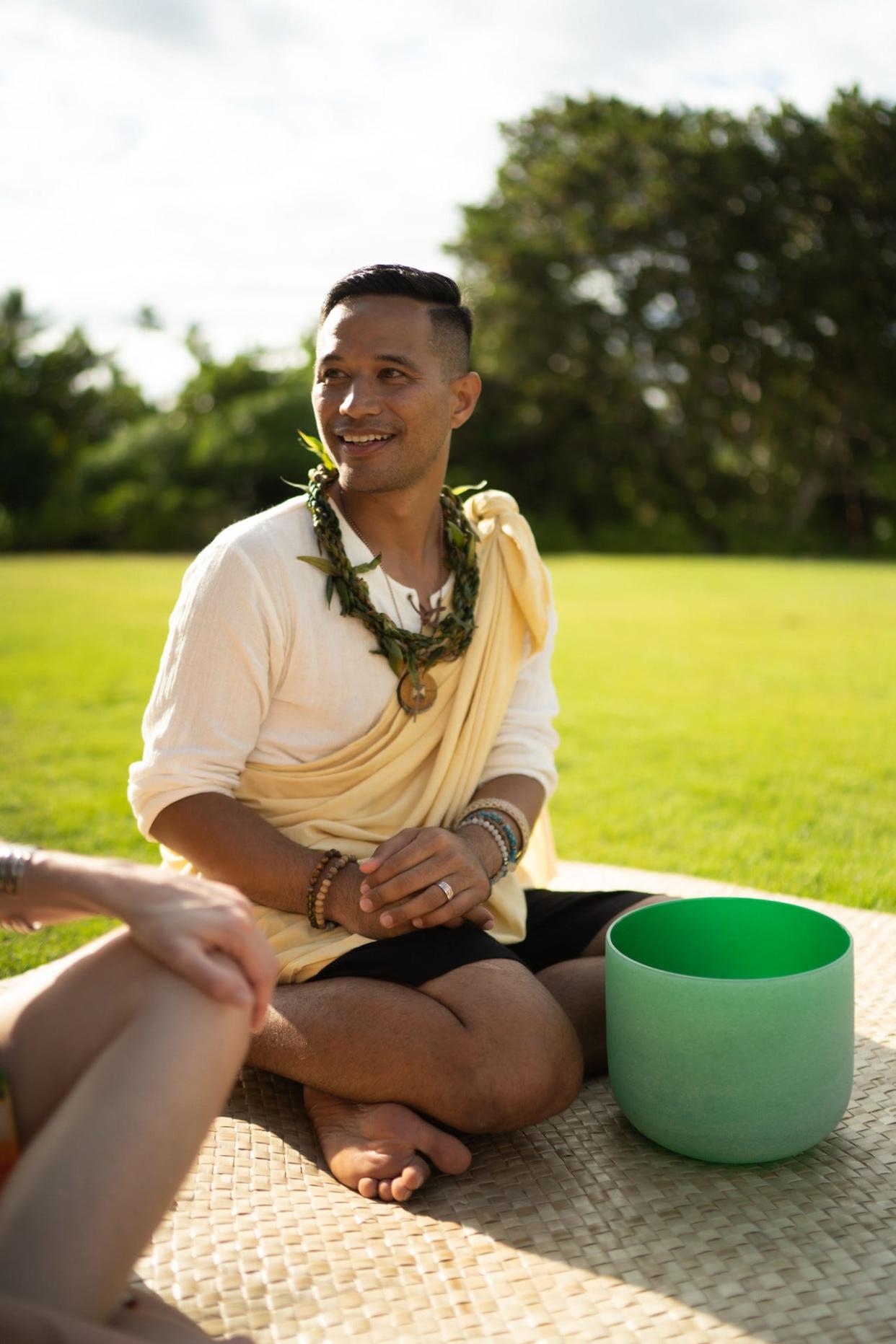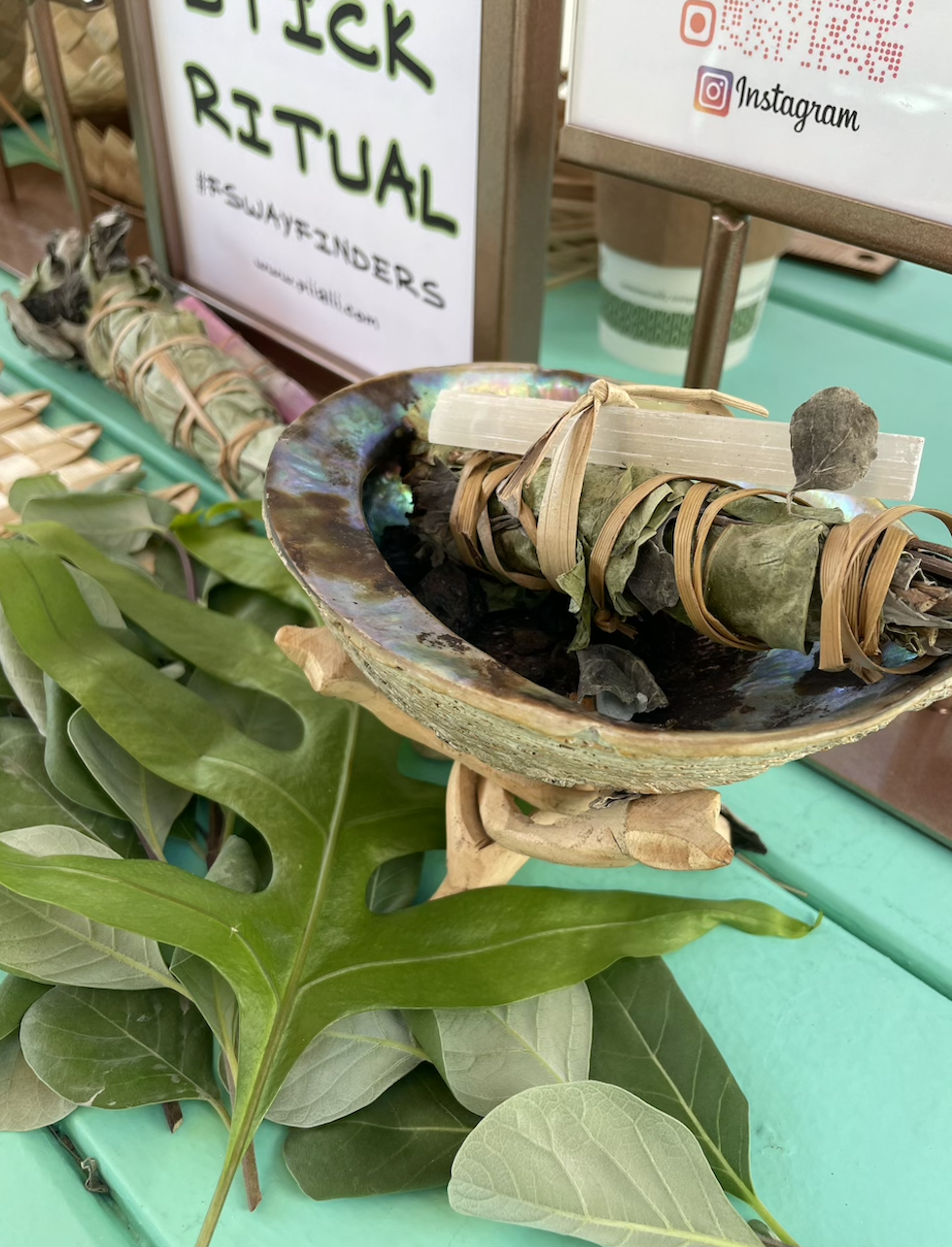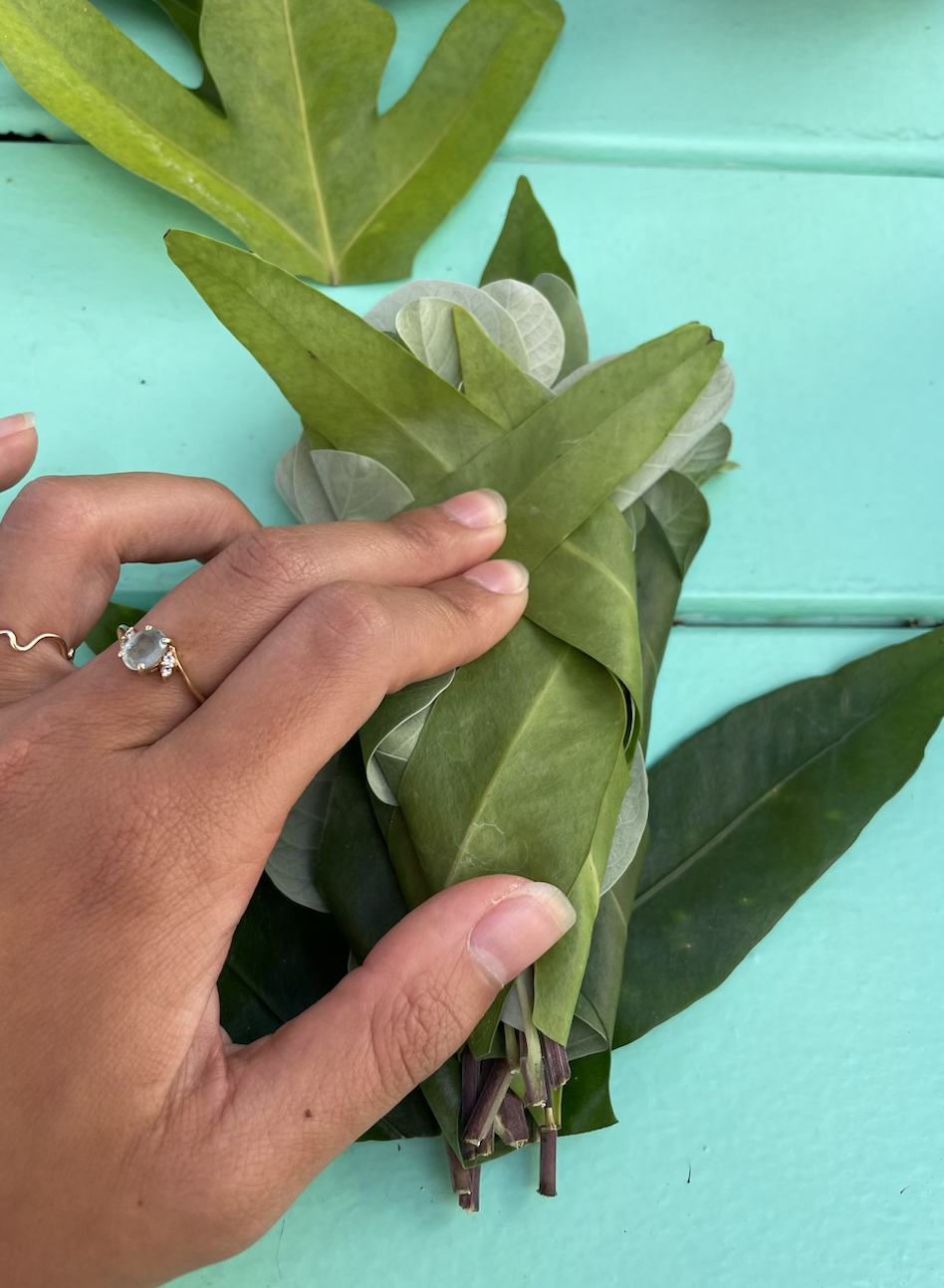At this hotel, guests can make ancient medicine thanks to this native healer
“When we think of medicine, we think of a prescription, a pill, but medicine comes in so many forms,” said Pi’iali’i Lawson, a Native Hawaiian cultural practitioner.
Lawson, who comes from a long line of ancestral weavers and kāhuna lapa‘au (Native Hawaiian healers) who revered the power of plants, shares his practice with guests of the Four Seasons Resort O’ahu at Ko Olina. He grew up just a few miles away from the resort.
As Lawson explained, medicine is correlated to your needs. “I need to go in the water; that’s the medicine for the day. Maybe I just need to eat a cheeseburger. What does our body need right now,” he added.
With a deep connection to nature, Native Hawaiians have turned to plants for centuries to help cure any ailments or for preventative purposes in an ancient practice known as lā‘au lapa‘au (lā‘au meaning plant and lapa‘au meaning to heal.)
“A lot of times we see plants like, ‘oh, they’re nothing, they're just there,’ but plants are there to serve a purpose, to provide medicine,” he said. “It’s been with our ancestors in indigenous cultures around the world.”

Kava, or ’awa in Hawaiian, was believed to help muscles relax or with insomnia. People were given parts of the kukui plant as a laxative, and the nut was used to help heal ulcers and sores. ’Olena, or turmeric, was used as an anti-inflammatory. The list goes on.
At the Four Seasons Resort this summer, Lawson is running a weekly workshop where people create their smudge sticks from native plants they pick right on the property. After the stick dries, people can burn it as “a way of bringing balance to your body, your heart, maybe your house and car.” He also offers another workshop, a Muhala Sound Healing Ritual.
What is smudging?
Smudging is a sacred practice used by many native cultures to ward off evil spirits and energy, especially in ceremonial rituals. The most popular plant to comprise smudge sticks is white sage, mainly by tribes in California and Mexico who also incorporate it in their food, medicine and more. Smoke holds cultural and religious significance for many worldwide, like how the Chinese, Japanese, Egyptians and others are known to burn incense.
“This workshop is really about how we can connect to the energy and intentions of that and create our own smudge stick using plants that are already around us,” Lawson said.
Coral reefs are dying. What one Hawaii resort is doing to help.
A focus on sustainability
Lawson has always enjoyed the tradition of burning sage but wanted to give the practice a sense of place in Hawaii.
It’s not difficult to find a smudge stick in a store, especially one that sells other New Age items like tarot cards and crystals. The mainstream popularity of white sage smudge sticks has caused overharvesting of the plant, negatively impacting the indigenous cultures deeply rooted in the practice. Something similar is happening to the dry forests where palo santo is harvested, a wood burned by indigenous communities in Central and South America in religious ceremonies that's now become popular in the Western world.

“Why don’t we use plants here? Why are we getting stuff from the mainland? It’s taking away from their practice,” Lawson said. “As a native person, we have to be mindful of other native practitioners. Spirituality is being mindful.”
Lawson began to experiment in 2020 with what Hawaiian-grown plants could work in a smudge stick.
So far, he’s the only workshop in Hawaii doing something like this with smudge sticks, and he doesn’t know of other practitioners doing it either.
“As practitioners, we limit ourselves because of what we’re told, we’re afraid of exploring new things because someone may say, ‘oh that’s not appropriate,’” Lawson said. “But our ancestors … always adapted.”
What is it like to make your own smudge stick with Lawson?
Before we even start harvesting plants, we need to follow protocol, the necessary Hawaiian code of conduct: asking for permission from ancestors and spirits. Hawaiians follow protocol when entering sacred spaces like Mauna Kea or gathering flowers for leis.
For our protocol, we recite a short prayer in Hawaiian that Lawson wrote that expresses gratitude before we forage for plants.
We walk to a sprawling shrub with branches growing small round leaves and purple flowers right by the pool. The pohinahina is an endemic plant related to the mint family with a light, herbally scent, capturing the energy Lawson is looking for.

I snip off 12 cuttings, measuring the traditional Hawaiian way: with my body. I hold the tip of my index finger to the tip of my thumb up to each branch, a length called kiko‘o.
Around the corner of the resort by the koi pond, we scan the ground for laua‘e ferns, recognized by the spores on its fronds. Although it originally hails from Australia, it is ubiquitous in Hawaii, so these plants offer a sweet, almondy scent.
I’ve seen these plants everywhere, from the mall to the beach, but overlooked their potential.
We sit back down and wrap the pohinahina cuttings into the fern fronds tightly into a bundle. He places a selenite crystal – to help with cleansing – in the center before fastening the bundle closed with twine.
Guests can take the smudge stick home and wait a few weeks for it to dry out. Once the stick is ready, people can light it and cleanse their own space.
Kathleen Wong is a travel reporter for USA TODAY based in Hawaii. You can reach her at kwong@usatoday.com.
This article originally appeared on USA TODAY: This Oahu resort lets guests make ancient medicine in unique workshop
